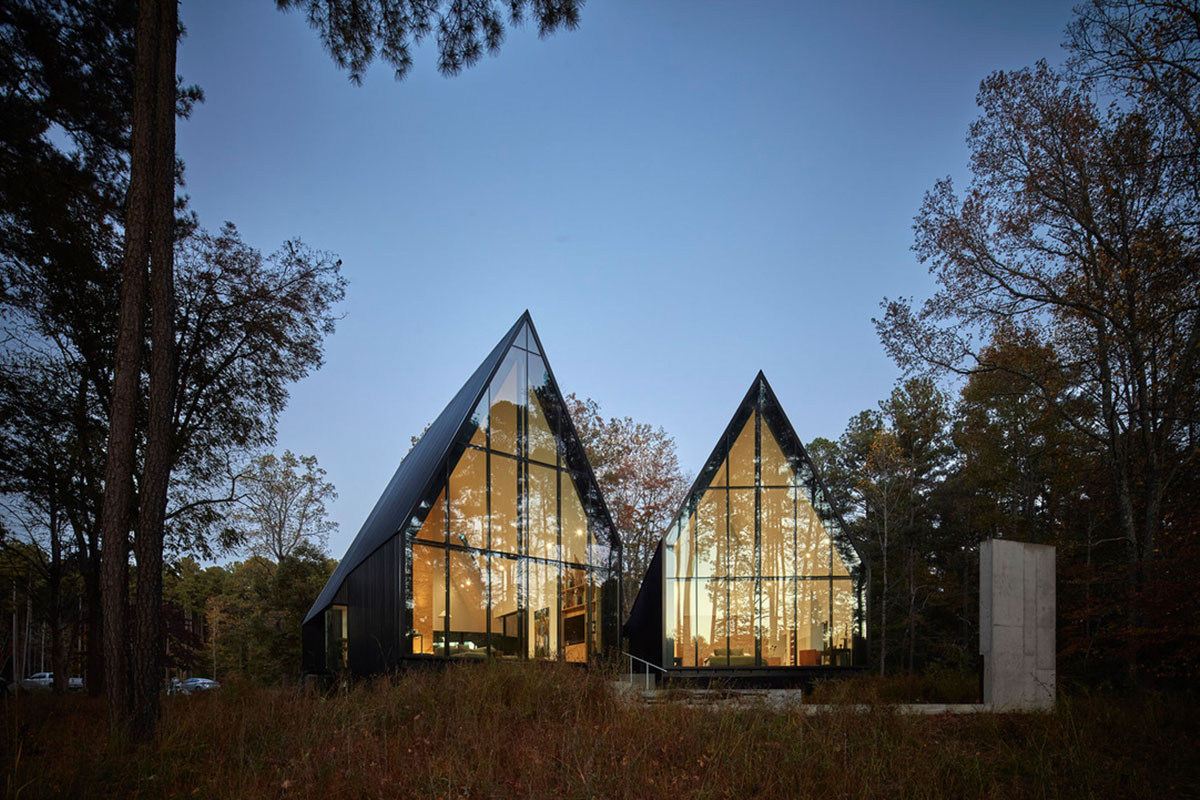
Located on a wooded 65-acre site in the Appalachian foothills near the Eno river around Raleigh Durham, NC, the Steeplechase house is designed as a place of reflection and repose – a pavilion amongst the trees that connects to the expansive natural setting. The simple double gable roofs rise to 31 feet high with expanses of glass that allows nature to visually connect to the interior space and help forge a deeper, more meaningful understanding of the relationship between the natural and built environments.
The structure’s reflective glass and black metal exterior give the building an ever-changing presence during the seasons; receding into the forest‘s dappled light in the summer and winter stalk-like tree structures and standing out like a beacon with the occasional winter snow, while the natural plywood interior create a protected and warm gathering place, while preserving the spectacular view into the forest.
The plan is organized around two open gabled volumes for the public and private zones of the house. The kitchen/dining area connects the two sides of the house with a transparent lower scaled gallery like loggia with glass on both sides that feels like a walk in the forest when moving between the two volumes. This transitional space divides and connects the two distinct zones of the house while allowing a sense of spaciousness and escape.
This project takes a prototypical and iconic house form and is innovative with it with a modern approach that extrudes that form and then abstracts it. The reflections are beautiful and then the section shifts and serpentines through the site to create a wonderful courtyard space on the inside.